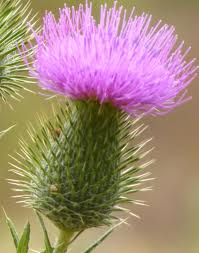





Planting native plants in a wildlife garden can be a simple affair or it can be a little more ambitious, such as sowing a cornfield, planting a woodland, planting a hedgerow or creating a wildflower meadow.
Maintenance will be different, because no longer can you reach for the spray gun when a pest or some weeds appear. Native plants are adapted to local soil and climate and tend to be more vigorous than garden plants, so strict control may be needed to prevent them taking over.
Many native plants come up from seed each year in the spring, produce leaves and flowers, set seed and then die as the cold weather arrives. These include cornfield annuals, which used to grow between the rows of corn in the farmers’ fields. They were adapted to the annual routine of ploughing, sowing and harvesting — the seeds germinated with the corn, produced flowers and set seed, which was then shed as the corn was harvested. The shed seeds were turned into the sod as the farmer ploughed. Many such plants have suffered from the use of weedkillers applied to ensure that the harvested corn is uncontaminated. They are now available to gardeners, however, who can have their own colourful mini cornfield year after year.

Some native plants are very vigorous and will need to be kept under control if they are not to take over and turn the garden into a glorified nettle and bramble patch. For this reason, a few plants are considered too great a potential problem. They include most of the thistles, which, although extremely popular with seed-eating birds and vital for providing food for the caterpillars of the painted lady butterfly, have a tendency to spread their large numbers of seeds all over the garden and into neighbouring fields and gardens, which would make you extremely unpopular.
Two thistles which could be considered — Silybum marianum (milk thistle) and Onopordum acanthium (cotton thistle) — are less generous with their seeds, and the relatively few seedlings are easily seen and removed should too many appear. Other plants that should be excluded from your garden are creeping buttercup and bindweed; this is not because they have no wildlife value, but because they are already major weeds in some gardens and it seems unwise to introduce more of them purposefully.
Some native plants, such as yarrow, lesser celandine and toadflax, have strong creeping rootstocks or tubers; these can become a nuisance in an ornamental border but are excellent in a wildflower meadow. Dandelion, curled dock and plantain, all of which very readily set seed, also need to be confined to the wildflower meadow.
Brambles and stinging nettles, both indispensable for the wildlife garden, need to be confined to the remoter parts of the garden; you must ruthlessly eliminate any shoots that appear beyond the defined boundaries of their areas.
The key to controlling all these plants is to check every autumn whether they have started to spread too vigorously and to remove any trespassing plants.
Celery: Planting, Growing and Harvesting Celery Plants
Chard: Planting, Growing, and Harvesting Chard
Lettuce: Planting, Growing and Harvesting Lettuce Plants
Onions: Planting, Growing and Harvesting Onion Plants
Potatoes: Planting, Growing and Harvesting Potato Plants
Copyright © www.100flowers.win Botanic Garden All Rights Reserved